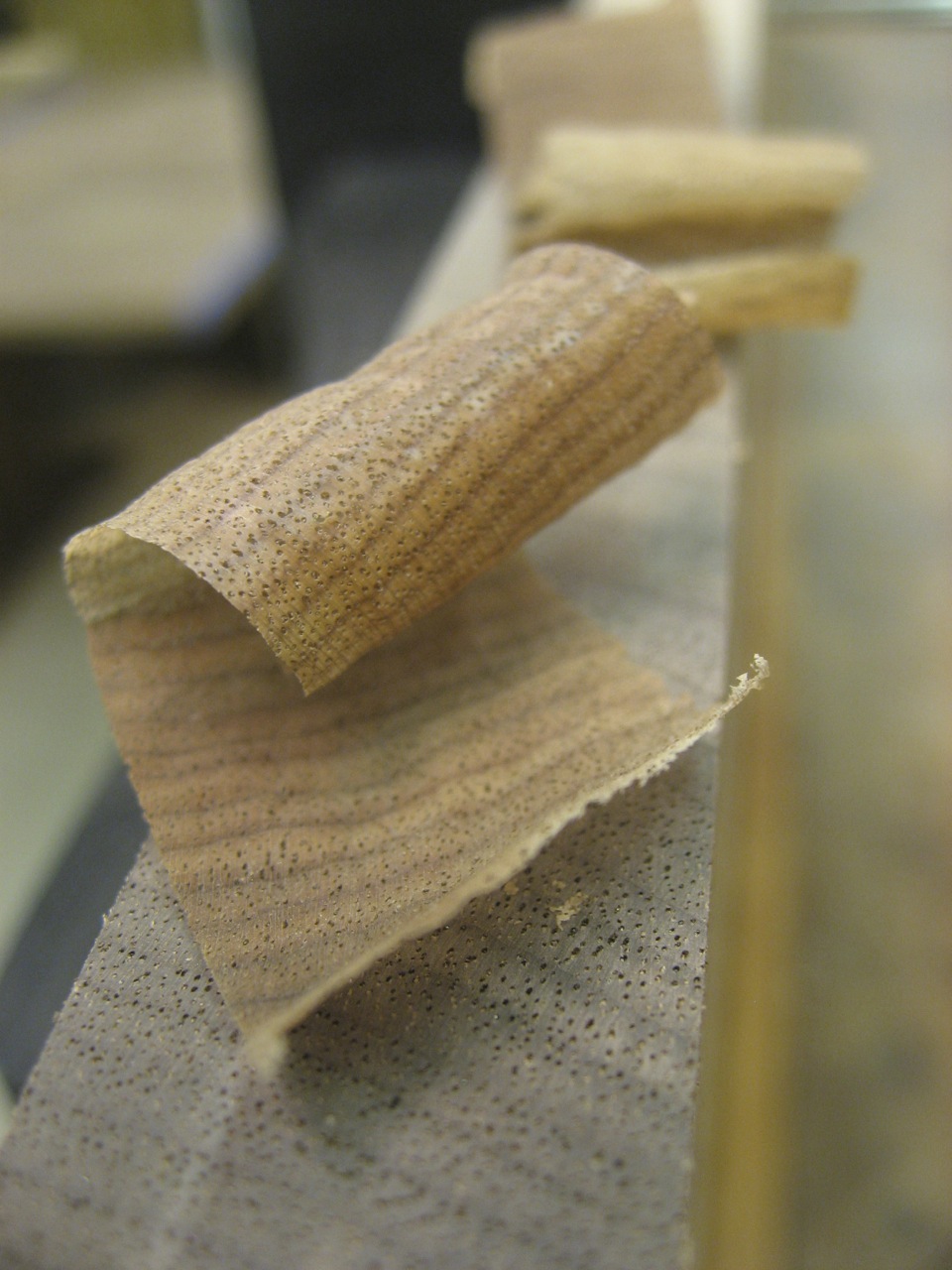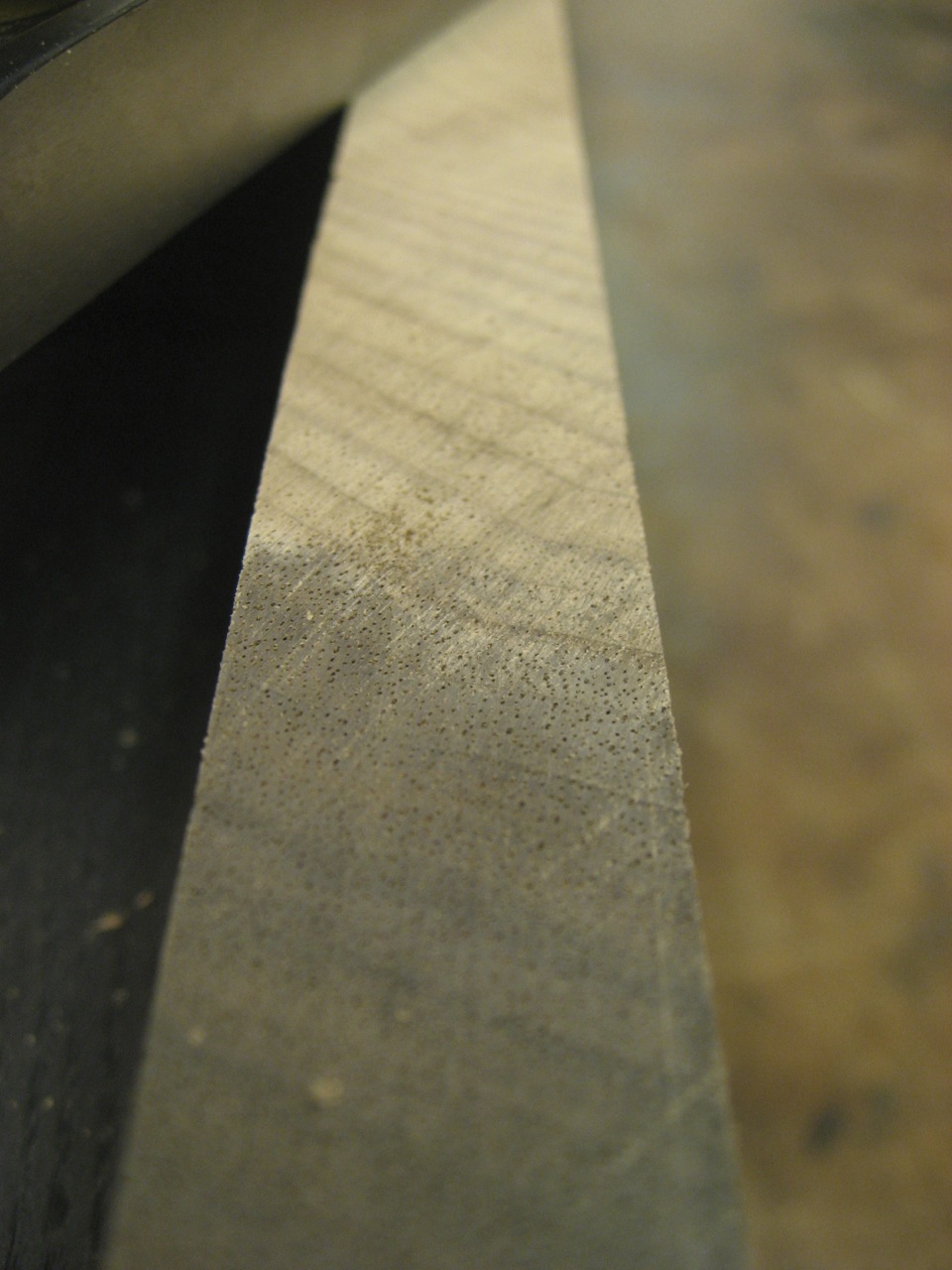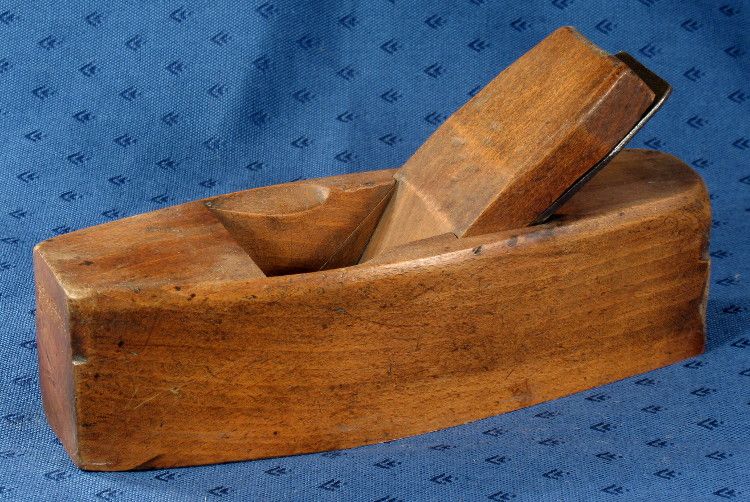You are using an out of date browser. It may not display this or other websites correctly.
You should upgrade or use an alternative browser.
You should upgrade or use an alternative browser.
Planing End Grain
- Thread starter James C
- Start date

Help Support UKworkshop.co.uk:
This site may earn a commission from merchant affiliate
links, including eBay, Amazon, and others.
Jacob
New Luddism. Wake up and resist.
Well OK yes if it's thin enough, and the right variety. I think the stuff in BBs link above also looks like an easy one. I wonder what it is, vaguely like oak but with very open pores. Butternut?Peter Sefton":iwyrqmn5 said:I can’t think of any hardwoods I have end grain planed that have not produced shavings, dust shows the tools are blunt breaking the fibres not cutting them.
Agree.You don’t have to have a fancy shear cut specialist plane just a sharp one.
A prob for beginners is the contradictory advice. On the one hand it's difficult, another says it's easy.
The truth is in between - if you are new to it it's difficult, with practice it magically becomes easier!
The practice is more important than the kit (as long as it's sharp).
Sgian Dubh
Established Member
He may be planing the mitred ends of that bit of what looks like poplar (tulipwood) reared up on the right hand end of the shooting board Jacob, but the shavings on the bench are unrelated to that particular piece of wood-- the shavings could be steamed beech or cherry for example, but they're not white/off-white, they're long grain, not end grain; and they're too wide for the mitre that seems to have been cut in that photograph. Slainte.Jacob":bb2z1g3w said:He seems to be planing a mitred surface. This is really easy with any sharp plane, compared to planing at right angles to the grain
Jacob
New Luddism. Wake up and resist.
Right so they are! Not even end grain. The mitred piece presumably one he did earlier!Sgian Dubh":3j2hld2o said:He may be planing the mitred ends of that bit of what looks like poplar (tulipwood) reared up on the right hand end of the shooting board Jacob, but the shavings on the bench are unrelated to that particular piece of wood-- the shavings could be steamed beech or cherry for example, but they're not white/off-white, they're long grain, not end grain; and they're too wide for the mitre that seems to have been cut in that photograph. Slainte.Jacob":3j2hld2o said:He seems to be planing a mitred surface. This is really easy with any sharp plane, compared to planing at right angles to the grain
I was looking at the wood in the link here http://blog.woodworkingtooltips.com/201 ... end-grain/
and wondering what it is.
bugbear
Established Member
Here's more detail, for those that feel the need:
here's the entire thread
He's planing end grain on donkey's ear.
Here's the images from the blog I linked to:
Shaving:

End grain surface:

BugBear
here's the entire thread
He's planing end grain on donkey's ear.
Here's the images from the blog I linked to:
Shaving:

End grain surface:

BugBear
Sgian Dubh
Established Member
I think that's possibly American black walnut, but it might be butternut which is sometimes substituted for walnut. Butternut has similar grain characteristics to American black walnut, although it's slightly coarser, paler in colour, lighter weight, and somewhat softer. Slainte.Jacob":g9yxyncd said:I was looking at the wood in the link here http://blog.woodworkingtooltips.com/201 ... end-grain/
and wondering what it is.
bugbear
Established Member
János":15gxf1mi said:Hello,
The tool is the wooden miter/mitre plane, with bevel down blade, with single or double iron, with straight sides or in coffin shape. It was mentioned in Whelan, John M.: The wooden Plane, pages 65-66.
This is mine, with an 50 mm blade with cap iron, bedded at 32 deg.
János
Thanks for the clarification - I didn't think of that as a particularly nation-based design, although (as you say) Whelan does indeed make the claim.
Our own Philly makes those, in both plain and skewed variants
http://www.phillyplanes.co.uk/index.php ... &Itemid=12
http://www.phillyplanes.co.uk/index.php ... &Itemid=21
and I can confirm that they work extremely well.
Whelen says the square bodied variant is the exception, with the coffin variant being more common. Interestingly, I have an instance of this "American" plane, made just up the road at Norwich, by Griffiths.

(described here
original-wooden-low-angle-plane-described-t36198.html
)
BugBear
GazPal
Established Member
bugbear":1z3x8x82 said:Robert Wearing calls (and spells it) "spelching" in The Essential Woodworker.
BugBear
I honestly don't care how Robert Wearing spelt it. :lol: The "ch" sounds "k" and original pronunciation was spelk, with spelling variations including spelke, spelc and spelch. I do however care about the manner in which The Schwarz sometimes misleads others via his interpretation/misinterpretation of words and information. He's a writer and lifelong amateur woodworker, but not someone who's been involved within the craft for the entirety of his working life.
http://utting.org/wordpress/word-of-the-week-spelch/
From the above link;
"As many of you have been reading this, the little voice in your head has been pronouncing "spelch" to rhyme with "squelch"; but, while researching this post, I learned that, because of its root in the Old English word spelc (a splint for a broken limb), spelch is correctly pronounced "spelk" to rhyme with whelk.
http://www.dsl.ac.uk/snda4frames.php?dt ... uery=Spelk
DSL - DOST (Spelk,) Spelch, Speck, n. [Late ME and e.m.E. spelke (Prompt. Parv.), spelk (1563), OE spelc. Also in the later dial.] a. ? A rod or bar used in building (a roof, etc.). b. A splinter. — a. The portcullious … beand rasit vp, fell doun to the ground agane, and a part of a spelch [Bann. Memor. 264, spelise] therof fleing of, hurt Harie Balfour in the heid; Bann. Trans. 388. For work furnissed … to the ferry boat viz. seame roofe and specks [? erron. for spelks]; 1683 Kirkcudbr. B. Rec. MS 1 Aug. — b. The seaventh kinde [of fracture] is, when a little part of the bone is superficially separated like unto a little spelch or sclat, called by the Greekes Apotrasis or Acopape; Lowe Chirurgerie 354.
--------------
I tend to prefer kniving to lines before shooting end grain, but often chamfer to a line and definitely recommend a plane set to take as fine as possible shaving with a fresh sharp edge.
Finding a plane stopped in it's tracks when shooting typically indicates too aggressive a set, a less than ideal cutting edge, or both.
Pronounce it as you wish, but the way it was pronounced in Old English is completely irrelevant. "v"s in Latin were pronounced "w", but if I used the word "wagina" everyone would think I was off my trolley. Language changes.
Jacob
New Luddism. Wake up and resist.
Wagina?
What a wag! :lol:
What a wag! :lol:
bugbear
Established Member
GazPal":21penehf said:Spelking - up this way - simply means splintering and I've had more than my fair share of spelks (Splinters) in my fingers and hands over the years. Ye olde worlde Schwarz mis pronounces ye olde English/Norse word every time and insists on saying spel ching, whereas it should be pronounced Spelking with the ch sounding like a k. :wink:
Here's a link to an online source I've just found which helps explain;
http://thecarpentryway.blogspot.co.uk/2 ... pelch.html
The Yanks do tend to insist on making up their own versions of our words and place names after all
From your
A variant pronunciation and spelling of spelc is spelch, typical of a dialect used in the London area. Thus, spelched, spelching.
Sounds like there are regional as well as national variations.
I cited Wearing because he is a living connection to craftsman of earlier times (and by extension, their language).
BugBear
Cheshirechappie
Established Member
There are still, despite the homongenisation of language by the rise of universal broadcasting, many regional variations of dialect and pronunciation. Just up the road from Gaz, in Scotland and the borders, a 'church' is a 'kirk', which seems consistent with a hard 'c' in 'spelk'.
Language underwent a profound change in the 16th century - the Great Vowel Shift - but it happened in the south, predominantly around London and the university towns. The older English spellings, pronunciations and dialect words persisted far longer in the North. They still do - 'fell', 'beck', 'tup' and many other words still in regular use. Northern English is nearer to Middle English than current BBC English.
Language underwent a profound change in the 16th century - the Great Vowel Shift - but it happened in the south, predominantly around London and the university towns. The older English spellings, pronunciations and dialect words persisted far longer in the North. They still do - 'fell', 'beck', 'tup' and many other words still in regular use. Northern English is nearer to Middle English than current BBC English.
B.B.C. English? B.B.C. English is more likely to be Asian or Scottish or both.
GazPal
Established Member
Cheshirechappie":34u3l481 said:There are still, despite the homongenisation of language by the rise of universal broadcasting, many regional variations of dialect and pronunciation. Just up the road from Gaz, in Scotland and the borders, a 'church' is a 'kirk', which seems consistent with a hard 'c' in 'spelk'.
Language underwent a profound change in the 16th century - the Great Vowel Shift - but it happened in the south, predominantly around London and the university towns. The older English spellings, pronunciations and dialect words persisted far longer in the North. They still do - 'fell', 'beck', 'tup' and many other words still in regular use. Northern English is nearer to Middle English than current BBC English.
Precisely the point I was attempting to make. Many words are still in regular use within the North East and more heavily rooted in ye olde worlde Saxon and Scandinavian grammar than those used further south.
Mrs P can certainly attest to the differences, as she's a West Londoner born and bred.
Similar threads
- Replies
- 59
- Views
- 7K
- Replies
- 168
- Views
- 13K
- Replies
- 16
- Views
- 1K



